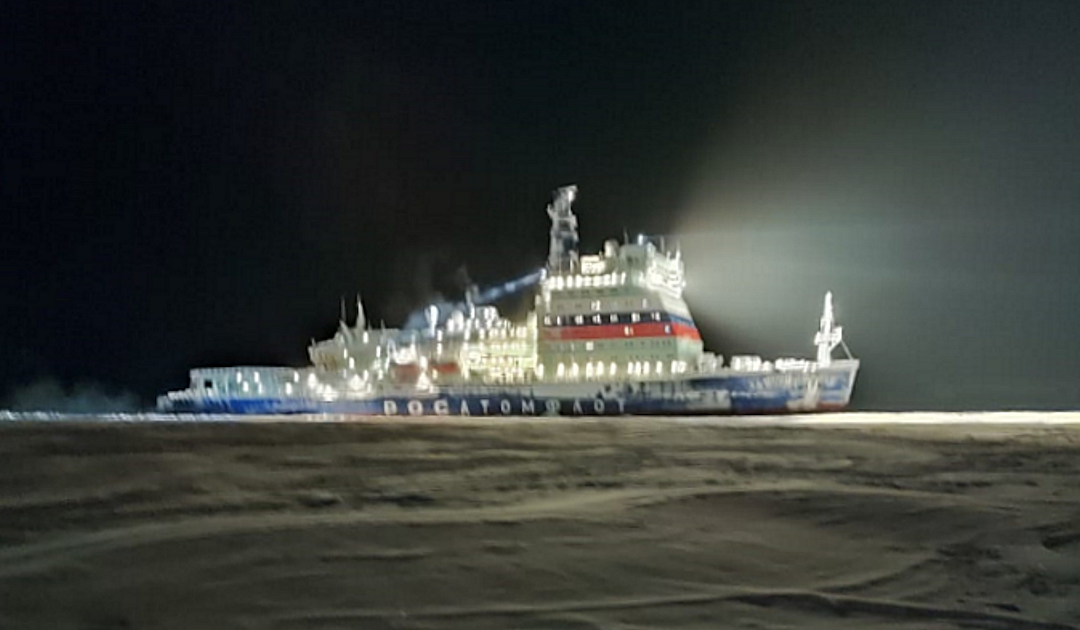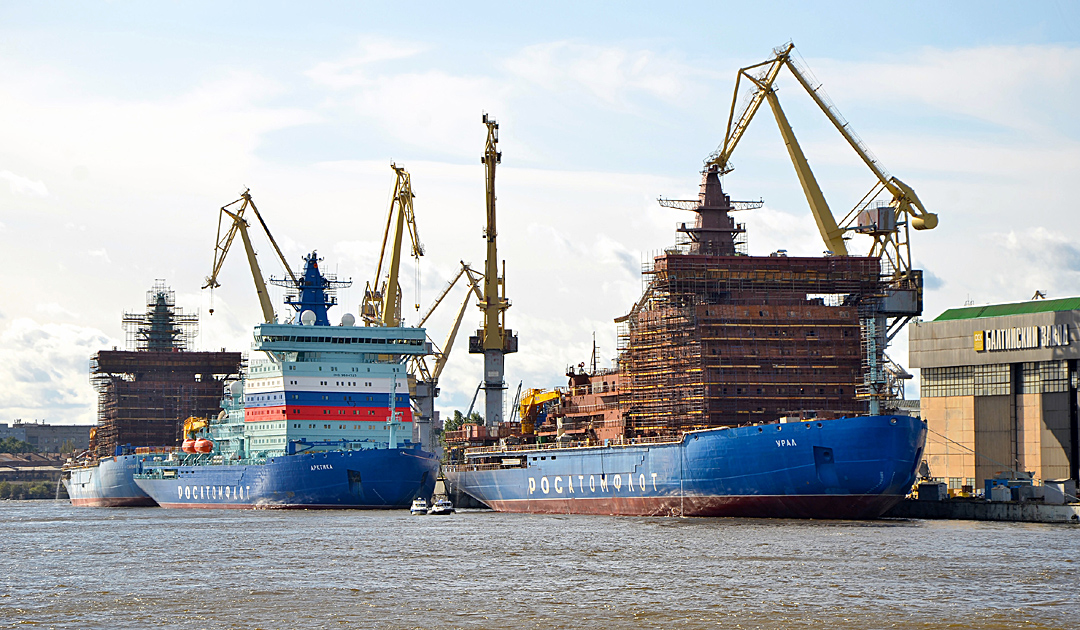
The Northeast Passage is the lifeline of the Russian North. A large part of Russia’s east-west trade runs along the Arctic coast. Despite the overall dwindling sea ice, icebreakers must keep this lifeline open in winter. The Arktika, Russia’s flagship of the nuclear icebreaker fleet, was built for this purpose and could now prove that the need for powerful icebreakers does exist.
The nuclear icebreaker successfully delivered two cargo ships to Pevek on New Year’s Day, together with the conventional icebreaker Kapitan Dranitsyn. A third ship, which was part of the convoy at the beginning (on 18 December 2021) on the edge of the Kara Sea, had to leave the group near the New Siberian Islands. No reasons were given for this. However, the Arktika, after successfully delivering the remaining two ships, Yuri Arshenevsky and Engineer Trubin, is underway to escort the Polar King, another cargo ship, from the region around the islands to Pevek. “We are satisfied with the results of the transition to the east,” says Mustafa Kashka, the general director of Atomflot, the operating company. “Escorting the convoy was a good experience for the operation of the universal nuclear icebreaker. The vessel has confirmed expectations in the design characteristics of its icebreaking capabilities.”

The Arktika, which completed its maiden voyage last autumn, is currently the world’s most powerful icebreaker and is powered by a latest-generation RITM-200 nuclear reactor. This delivers around 60 MW of power, enabling the ship to break through more than two metres of thick pack ice with ease. According to Rosatom and Atomflot, this was necessary because the ice conditions in the area between the Kara Sea and the Bering Strait are currently a great challenge. Since November, voyages through the region have been possible only with icebreaker support, and more than 20 ships were trapped in the ice at the beginning. Only thanks to the deployment of several powerful icebreakers, including the two nuclear icebreakers Taimyr and Vaygach, were the ships able to be freed from their predicament.

The Arktika had missed the mission in November, the ship had been assigned to missions in the western part of the Northeast Passage to test the propulsion again. This is because the icebreaker had been struggling with propulsion problems since its maiden voyage. Before the maiden voyage, one of the three drives failed and the icebreaker could no longer use its full power. Nevertheless, the ship reached the North Pole on 3 October. After that the Arktika spent the winter 20/21 in Murmansk. Another lengthy repair was due in September. Now, however, the icebreaker has lived up to expectations and Operations Headquarters is already planning the next convoy for its flagship.
Dr Michael Wenger, PolarJournal
More on the subject:





